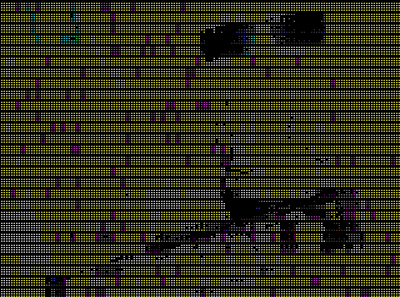-
Posts
118 -
Joined
-
Last visited
-
Days Won
2
Vonias last won the day on December 6
Vonias had the most liked content!
About Vonias

Profile Information
-
Gender
NA
Recent Profile Visitors
The recent visitors block is disabled and is not being shown to other users.
Vonias's Achievements
-
No, I used Suno. I think it was the 5.0 model's audio input, with 100 % audio influence, 0 % Weirdness, and 100 % style influence prompted as "Chorale."
-
He's accusing me of just clicking a button to generate music. I think you are missing the point here. There was great effort in creating this piece. If you're looking for reasons to exclude anyone during the holuday season, so be it. Have a merry christmas.
-
Right, but this isn't an AI generated work. The score, and midi are my own. It's an AI generated recording.
-
Well, look at you Mr. PC. My "AI Creation," really is 1:1 with my composition. If you'd feel better with me being bullied out of the entry, by all means, so you may have more fun.
-
Vonias started following Legislation , Fury of Ukraine and Jesus was Born this Day
-
"The Fury of Ukraine," was written backed into a corner by the media. I felt no choice but to compose my way out of it. I used CSound mainly, to compose. Some sounds are generated by Garritan. To create the third movement, I used an envelope - manipulating attack, release, hold, and sustain - and heavy reverb, to make it sound like a symphonic orchestra. I misplaced the score, somewhere. I'd have to venture the archives (dungeon) to find it. The first and second movement are the same music, just different in medium and presentation. I. First learned of the Patriot Missiles from my Uncle. My hope of a missile intercepted another missile was fascination, that I shortly realized "Wait, countries are going to launch missiles at another country?!" My uncle would casually state, "Not just one missile, multitudes of missiles." Luckily, my hope outweighed the fact of the matter: a barrage of missiles were going to launch somewhere, and the enemy did not know about it. The first movement of "Fury of Ukraine," is an artist's depiction of what that would sound like; no actual footage of sound was used, all sounds are generated by the artist. This is an example of aesthetics seeping into the arts, instead of the arts created aesthetics. What is under all the Artemis sounds, is a dispatch conversation, the concern for the artist how war shapes the behavior of our brave police officers. Though police are granted the use of mechanical force, and an advantage from the average citizen, but are not to be perceived as a militant force. That would go against our constitutional freedom. Comparable to the sounds I heard on the television, missiles intercepting missiles, the crackling was reminiscent a few dimensions from hell letting loose, but the silence in between was the work of miraculous intervention. My uncle told me to keep the Patriot System a secret and since, I have saluted each component in its making with great esteem. I now understood why he was so leery of Russia. II. Betrayal is a sanguine emotion. What's worse is how a sense of normalcy stings the soul, mixing emotions into a turmoil. That if we didn't have certain parts of the brain, we'd misunderstand the 'impulse' to create violence then and there. Zelensky, the leader of Ukraine, has considered stepping down from leadership if it meant helping Ukraine, but that was after his feeling of disgust having to accept a deal, under duress, from the US President over minerals. He's becoming more defiant to our leader. I listen to the second movement watching Zelensky's emotions flitter like a flame much like in the music. You can hear when the deal takes place in the music, and provocative trills send the listener in bewilderment as something happened. Reality moves slow at first, and the trill is unrecognizable. When reality is sped up, the trill can be heard and one is left in bitter extolment. III. Con Gusto, is a musical step away from the bitter cold politics to a snowy landscape exotic with strings, horns, all built on a fugue. A fugue is closer to home to Ukraine than it is to America, as the fugue was invented in Germany. I'm sure the affluence of Bach is heard stronger in the region creating a sense of stir. Con Gusto, is the feeling of energy gained from clarity. The haste can be heard as each instruments intricately intertwine to a meaning as a whole. A fugue demonstrates a whole through its sum of parts, and I imagine a well country comparable to a well oiled machine. IV. Chorale March, is a musical language that exceeds this world. The language is remedied from what Beethoven established in his romantic ideals, and in the 21st Century all music that has once been created may be further extended as a new, or neo, idea. Beethoven's romantic ideas are further known as neoromantic. The music comes from the big storybook of God, the artist uses as a peek into the future. The sounds are soothing, and begins with a big sigh. All sounds are 'cordant to create the greater sense of rational, that order is a necessity in our world to survive. If you listen to your heart, you will hear a great deal of happiness echoing through history, that when we work as a whole there is sometimes friction - there is always peace within. You can hear what is bare for the human in the absence of identifying personas, that I am only with my country when I want to be, that I am only who I am when I want to be, and to simply pause you can feel the love of God and him smiling upon us in our efforts to create something worthy of ourselves. Though, it is sometimes a symphony to remind us to pause.
-
I wrote this while listening to Jerry Bergonzi's Quartet play. One of the songs was, "Dark Matter," and I sampled a lick to an atonal fugue. Dark Matter.mid
-
"Jesus was Born this Day," is a hymnal song that includes, Euouae. Haven't heard the amen since the medieval times, thought I'd bring it back to present. The chords are adventurous and don't make much sense. However, this was the palette that I wanted for artificial intelligence to include. AI, did pick up the tune very well, except for the Euouae that was wanted for Descant. Anyone know how to do that in a prompt for AI? I'm out of ideas, I even used the braille's "In accord," to get AI to pick up the command. Other than that, the chorus was botched to good effect, read as the melody after a vowel chant. In effect, AI made a new chorus. Overall, the song is represented well, and I am happy with that. Enjoy! Jesus Was Born this Day_Harper.mid Jesus Was Born this Day_Harper.mid Jesus Was Born on this Day (David Harper) - MSMT.mid
-
AI was not used in this song. I played the saxophone, my group's name is "AI Competition." Yeah, the recording quality isn't the best.
-
"Legislation," is a work inspired by the government shutdown in, America. I'm so angry, I put to music all the words I can't say. The song is played over a vamp, free form. The saxophone chains melismatic ideas across the song. Other than
-
Alright, more bass movement in ambience, and bass timbre. Right, so work on the bass. I can do that. Yes, I was personally asked to tone the music down a bit. hahaha
-
Alright, fixed the dark mode issue. Counterfact in this case falls into the "other" category where it's all else but redefining a set of chords into a new song, creatively. I simply forged one of my songs with a new title to approach a different context that also resonates emotionally with me. I was inspired by, Kim Cascones, "Recontextualizing Ambient Music," vying for a more convincing sound structure, if not by the pounding of the anvil that is ostensive in the music: Recontextualizing Ambient Music in Csound That's good that it doesn't bother your ears. I had it professionally mastered, before I shared. I have the unmastered version somewhere if that's your thing? Subtle horror is tough. I thought I had got it, it's not so much unexciting, but uncanny, psychological, maybe personal, but the subtlety in horror is tough to pull off without explaining everything. Maybe you have a few pointers? Anyway, thank you for the review. It spurs me on to the next one.
-
"Abortion," is a counterfact from my symphony, "Ocean Shell." The 3rd movement is recontextualized under the topic of abortion, and the title comes with its own disclaimer. The song itself is a bit of a revolving door that works well in conversation. It depicts the images that he had seen from a civilization with too many abortions. The effect is subtle psychological horror. You can hear the unerring piano striking a nerve, eventually leading to catharsis release at the end of the song. Something, resembling a human emerging from the soundscape, screeching with agony. Yet, the music is presented in a matter of fact manner, like this is normal. Listener discretion is advised? In America, we share our fears. Feel free to remix. In practice, when someone says they don't like the song, "Abortion," I tell them I don't like abortion either. You either love it or hate it. With that said, the advocacy is there in hopes that anyone can make educated decisions about the process of hard topics, in the news especially. The track was developed from the saxophone, piano and ambience added after the original sound. The saxophone is slowed using Paul's Stretch to convey the "orchestra" hidden in the horn. Altissimo peaks at a hotpoint in the sound, seering white hot spewing lashing out with ocean waves in consequence after the "blissimo." The piano really throttles throughout the song unapologetically. If you never felt guilty, you may now. Anger is accepted form of currency to the imagination in the symphony. The ambient instrument was developed by, Kim Cascone, and he was kind enough to be available for review, when he's not trapped in covert. The form is freeform, but if the altissimo were a dividing factor, a monument to the piece, then it is a diptych, where fractal frames embolden the images experienced. Pretty much anything you could say about abortion is true for the song, too. 😕 Have fun!
-
Sounds like you have a strong grasp on aTonal music! It's not repulsive as experimental atonal music, but it conveys well the message of urgency and importance to the audience. Since you have that down, I recommend exploring more compositional techniques; personally, I don't like long intros, and drawn out sections. The shape of the overall structure doesn't need to be so square. I love the dramatic qualities of the work! If you need more atonal inspiration, check out my website: www.atonalfugue.com Here, you will find that the numbers apply to just about anything. I wish you well on your total serialism journey, and I'm sure the birds do as well. Thank you!
-
I've begun a challenge for myself, creating Halloween music for the month of October. So far, I have "The Raven," "Headless Horseman (Salvos)," "Cthulu," and "Bessy." Bessy, is the Lochness Monster based in Ireland, or England, I believe. Scores are also attached. The process is pretty simple. I store my numbers in the website, then work the music by more instinct and storytelling; it's so difficult to describe the joy of atonal music, so I hope the website inspires you: Projects - David Harper The website is a multitool, that manipulates your set in a linear fashion creating arrays very close to the original that you input. Further inspiration may be gathered by the in depth report generator. Physics terms are more complex, while the basics are present. Furthermore, I created one method for composing atonal fugues, and the website will generate a fugue based on that method; atonal fugues, are tough, so have at it! Other than that, the performances are based on sounds generated by, Garritan. Also, the works were instrumentalized by AI over at Suno.com! If you haven't checked it out, now is the time after Suno Studio was released giving midi access to your creations. Copyright with AI is not so complicated: Copyright in, copyright out; also Suno has your back too with protection. Anyway, anyway, the purpose of Copyright is to encourage creativity; so don't hold back on the numbers input on the website, I provided. The fractal viewer allows you to see the physical effect each note plays upon the other to make you more accurate in your composition. About the only thing the website doesn't do, is serve coffee; but you have amazing taste, already, why would you need a website?! Carrying on, each composition is Halloween themed of monster favorites in America. I'll write music about some of the folklore in the area too! Cthulu for example, is very popular in a small town I lived. The next one will be the Chuchacabra, and Big Foot later. Some horrors include zombies in the small city I live in, and everyone is excited to tell their horror story too. One that comes close is to the area is the Bell Witch, told be the amazing William Turner: Historian William Turner weaves tale of Bell Witch Thanksgiving is all about the Crucible, Canterbury Tales, so I'll see how long I can keep this thing going into November. The Raven, a macabre march blending Gothic, Romantic, with contemporary Wind Ensemble. The polarity of aTonal music to tonal, is like a crunchy smore with gooey insides. I had no idea the complex ration facing when composing in this style, so I held on until everything around me changed. The two styles are oil and water, not to mention that they are very kinetic in response to sound creating a mission impossible for the composer sometimes. My friend wanted Hisashi's music in the song, so if it reminds you of the films, Kiki's Delivery Service, you are not far off from accuracy. Cascading thirds triumph in the trumpets, also creating the 'D' section of the form, ABACADABA. Most people get it, but just say the magic word, and all your dreams come true. The nuance leaves the composer big headed, and too clever for his own good. Salvos, is a complex machine of musical systems to create the effect of omni-movement of a horseman that managed to ride around with a jackolantern on his head. Can you imagine the coordination; he must be a musician, too! The song is very festive, set at the gross tempo of 144, to give that ghoulish quality to it. It's the same tempo as Michael Jackson's, "Thriller." Though, the song is tonal, the source originates in aTonal as loosely interpretted by the AI. I went with it along with the instrumentation, that summates a fast gallop in a dark soundscape. I think AI interprets most serial music as diminished, oddly enough. It's easier to measure the major seconds as consonent, and that resembles more serialism music to me. Lochness, is a lonely pianoscape of sound. I thought it reflected how lonely Bessy is as a monster of the lake. Serialism maintained better in this version, it sounds like a hybrid. It's hard to escape that aTonal melody, so I allowed AI to interpret the melody as a "reharmonization." The spindle catches on well the isolated sounds, melody, and creates a haunting beauty. This melody was made by the fugue generator in my website. It demonstrates all styles of fugue essentially - Stretto, augmentation, diminution, and appoggiatura. Cthulu, is aTonal. I was strict with the instrumentalization process. I imagine Cthulu to make ample use of ostinato creating a normalcy, only until you find the 'C' a completely different color by the end of the song. huehuehue. Only an octopus would think of that. The chords are thick and lend from Coltrane's "Sheets of Sound." I had to double the bass part to make the melody clear for AI, and I loved the organ quality created. Enjoy! fractal-fugue (1).mid
- 1 reply
-
- 1
-








